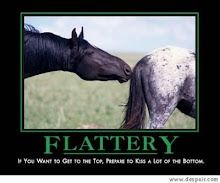One white foot, buy him.
Two white feet, try him.
Three white feet, be on the sly.
Four white feet, pass him by.
Two white feet, try him.
Three white feet, be on the sly.
Four white feet, pass him by.
Did we maybe misunderstand what people where trying to tell us by this? I've looked long and hard to find any evidence that white hoof wall is in any way lesser than black hoof wall and still found nothing apart from old wives tales. To say that unpigmented horn is weaker is like saying that unpigmented fur or hair is weaker, and I've never heard anyone say that their white horse's tail breaks more easily or is crappier than their black horse's tail - it really makes no sense.
So.... what have we missed?
The answer came to me last night when I was talking to the vet. Greasy heel!
Horses that have white socks are more prone to this than horses who have pigmented skin/hair, even on an individual horse the greasy heel is more likely to occurr on a white sock than one without. The vet went on to explain to me that the sun plays a part in the process of a greasy heel infection. Often it can start by a small sunburn, photosensitivity or an allergy, this in turn becomes itchy or will leave open areas of skin - perfect for an infection! Add to this concotion wet weather or dewy grass and we have everything we need for the perfect incubator: heat, damp, protection and food!
What can we do to help prevent this quite common infection?
* Reduce the effect of the sun - we can help with this by using fly boots, which are made from shade-cloth material so will reduce the UV on the area and lessen the chance of burn. In some situations this may not be viable as it may increase the humidity of the pastern area. Alternatively putting zinc or sun cream onto the back of the pasterns will also reduce the chance of a burn.
* Reduce the damp - I know it's impossible to change the weathe ror stop the dew, but we can reduce how much stays on our horse and how quickly it dries. Clip out the back of the pastern from heel the fetlock so there is little hair there to trap damp. When there's lots of hair on the pastern it can create it's own little micro-climate, warm and damp and protective for any infection - lose the hair, lose the climate. This also makes it heaps easier to put suncream or zinc on.
Once you have an infection there it is important that you are very consistent with treatment. The scabs will need to be removed to start the healing process, and the skin will need to be kept supple. There are a million and one treatments out there for greasy heel, but when push comes to shove, talk to your vet, as your vet will probably know what treatments will work best in your area and situation.


